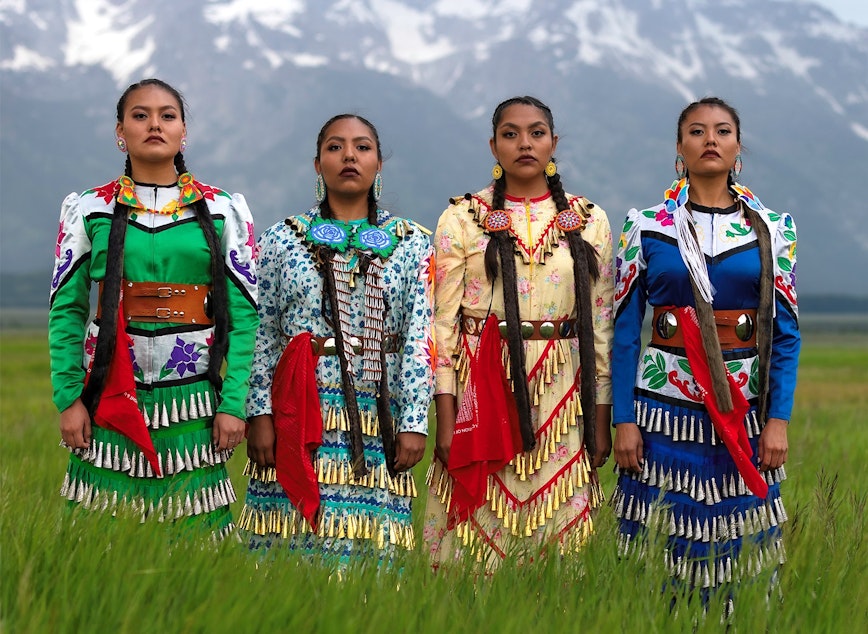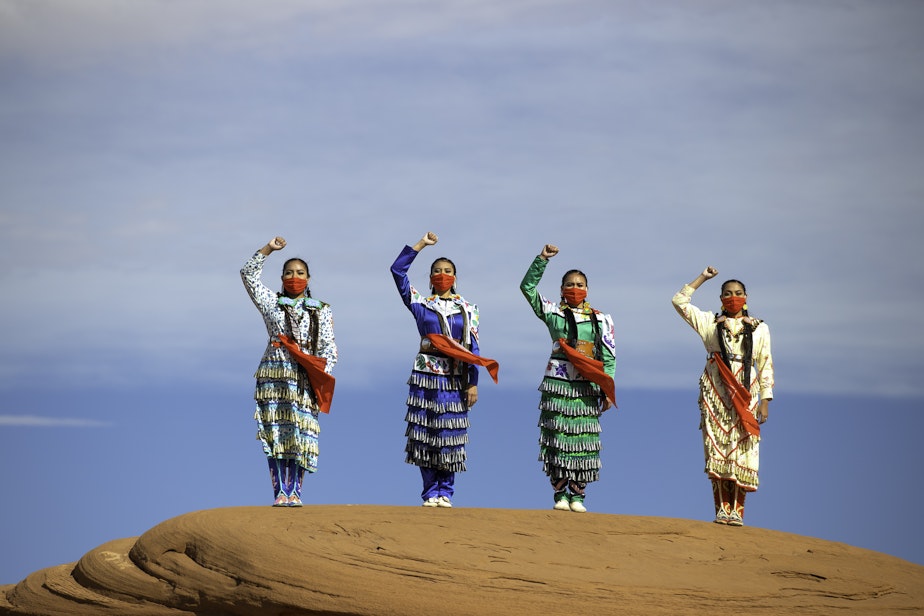'This came from a dream.' How this Navajo family is healing with dance

Eugene Tapahe never dreamt the coronavirus pandemic would bring the world to a stop.
Nor could he have known that when the virus struck, another pandemic a century earlier (and a tradition that grew out of it) would send his family on a 30,000-mile journey to heal.
"In May is when it really hit home for us," says Tapahe, an award-winning Navajo photographer and writer. "My aunt, she was in a nursing home and she ended up getting Covid. Because it was so early on, they wouldn't let any of us visit her. We'd just talk to her on the phone. And a couple weeks later, she passed away ... She was the last matriarch in our family."
He was devastated, confronted with the reality of a pandemic that would, as we now know, be so much worse than some initially thought in March 2020.

Then one night, Tapahe had a dream.
He describes a peaceful field and the calm he felt sitting in the quiet. Drums began in the distance. Then the metallic harmony of the jingle dresses as women danced into view. Drums began in the distance. Then metallic harmony of jingle dresses emerged as women danced into view.
He knew he had to make the dream a reality.
Sponsored
"I told my two girls, Erin and Dion," he says. "Wouldn't it be wonderful if we could make this real?"
So, they did.
Little did he know, Tapahe was following in the footsteps of another father: a Ojibwe man who is said to have dreamt how to make the jingle dress, and dance the healing dance, after his daughter became sick with the Spanish flu.
The Ojibwe man told his wife that the dress would heal their daughter. So the wife made four jingle dresses for four women to dance in through the night. By morning, as the story goes, their daughter was healed.
Sisters Erin and Dion Tapahe together with Sunni and JoAnni Begay became the dancers last year in the project their father calls "Art Heals: The Jingle Dress Project."
They've traveled more than 30,000 miles across the country, by Tapahe's estimation, visiting native lands and dancing to heal them.
"I thought why don't we take it to national parks and state parks, because those were the lands, during colonization, were first taken," he says. "Because they had the lush water and resources, and the lands were full of animals ... The project is about healing the land. Those are the lands that should be healed first."
Sponsored
Many times the Tapahe sisters and the Begay sisters danced alone, with only the land and animals as their audience as Eugene Tapahe captured stunning photos.
Now, though, they've been able to dance in front of people again.
The troop will dance at the Duwamish Longhouse and Cultural Center in West Seattle on Saturday, July 17 and at Pike Place Market on Sunday, Jul 18 as part of the Pacific Northwest leg of their journey.
So, the project has become not only about healing the land but also the people and culture this land first bore.
Sponsored
"Land recognition, native issues, the big thing for the girls right now is the missing and murdered indigenous women," Tapahe says. "And when you see them and how empowered they look in the photos, that's when art heals."
More than healing, perhaps, this project has strengthened his daughters, the next generation of Navajo matriarchs, decked in their beaded regalia and dancing to the sound of dozens of metal cones.

"I look at them, and I just think 'wow,'" Tapahe says. "You know, there's times when I'm wiping my tears off, just because I see this transformation of beauty and strength. I'm just so proud. I sit back and I think, you know this came from a dream."
You can find more about the project and see Tapahe's photographs documenting their progress here and on Instagram.
Editor's Note: This article has been updated to reflect the ceremonial significance of the jingle dress and the healing dance the Tapahe and Begay sisters danced across the country. A previous version of this story used the word “perform” several times in reference to the troop dancing at two locations in Seattle. However, before the troop danced at the Duwamish Longhouse and Cultural Center on July 17, 2021, Executive Director Jolene Haas explained the dancers were not “performing” for the roomful of observers - the dance is not entertainment. It is a healing ceremony.





